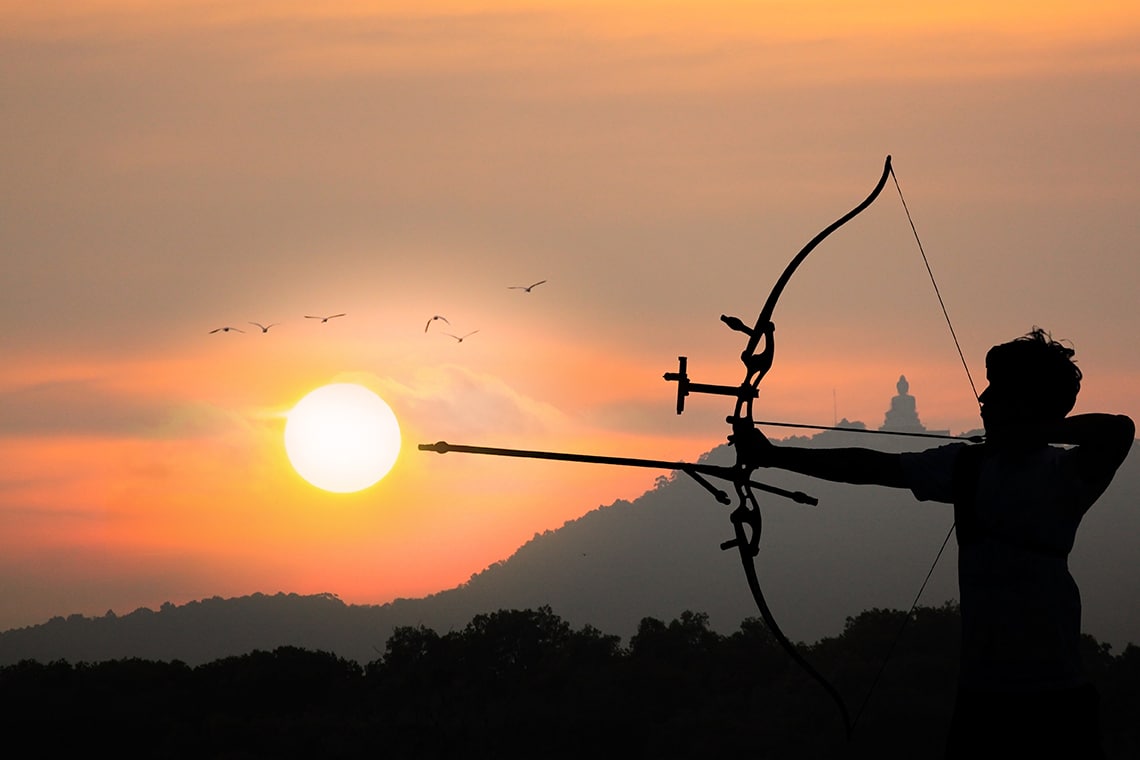The Japanese Longbow is called 'Yumi' in their native language and a 'traditional Japanese bow' in English.
The Yumi is unquestionably the world's longest bow, with a length varying from 212 to 245 cm, which is quite extraordinary, especially in comparison to the Longbow.
It will be challenging to shoot a yumi at first, even if you are skilled with your longbow or compound bow because the feel and technique applied on the Yumi are very distinct.
You must be wondering what makes this historical Japanese weapon stand out in the crowd. Is it the massive size of the bow or some amazing hidden feature embodied in this bow?
Be baffled no more because we've done all the research for you!
As simple as it looks, it isn't just the length that distinguishes the Yumi. Its unique form and asymmetrical shape set it apart from the latter.
To dive deeper into this distinct form of historical archery, continue reading ahead!

Table of Contents
History of the Yumi
To understand how this bow operates thoroughly, let's dig into the roots of its origin.
One of the most intriguing weapons used by the ancient Samurai warriors was the Japanese bow, also known as the Yumi, but its history dates back even further.
Bows were used as hunting tools before becoming weapons in many nations, including Japan. Bows and arrows have been used in Japan since at least 10,000 BCE, according to stones and arrowheads discovered by archaeologists.
During the Yayoi period, the Yumi was first used as a weapon when battles and wars were prevalent.
Early bows were basic; they were known as Maruki and were made of plain wood like sandalwood, bamboo, or mulberry. They were lacquered or wrapped in bark thongs to increase their durability in the Japanese climate.
How far can the Yumi shoot?
Generally, the Yumi can fire between 150 to 200 meters (or 490-650 feet) away.
You can arrive at the 100-meter mark with the use of lighter arrows. The strongest arrows can get you to shoot up to a distance of 200 meters.
It all depends on the kind of arrow you select to employ and how much bow hunting experience you have.
What price range is the Yumi available in?
If you're already captivated by this bow's strength and beauty and looking forward to purchasing it, be ready to invest a good amount of money in this bow.
Japanese longbows have been used for a very long time in Japan and can vary in cost from $200 up to $2,000 each.
However, a bamboo bow made by hand today might cost more than $2000, as the bows are equally challenging to make as they are to use due to their height of more than 2 meters.
The reason behind its asymmetrical shape
Several theories have explained the asymmetrical shape of the Japanese Longbow. Some people believe it was designed to be used on a horse so that the Yumi could be easily moved from one side to the other.
While some believed that the asymmetrical shape allowed shooting while kneeling.
Others claim that it has something to do with reduced vibration or the techniques employed to construct the bow in ancient times.
The Yumi in terms of durability and maintenance
The Japanese Longbows require a lot of maintenance and risk losing their shape if handled improperly.
You must know how to use your bow, or it will quickly become useless if not treated with care. On the flip side, it can have a long lifespan if properly cared for.
You must learn when to keep your bow strung and when to allow it to hang loose.
If you don't have a kyudo master who can teach you the bow's proper technique, avoid purchasing a Yumi, as it is completely different from a western bow!
Regular Longbow vs. Japanese Longbows
The construction and components of the Longbow and the Japanese Yumi are significantly different. A regular longbow is a solitary selfbow made of wood, usually yew.
In contrast, the Japanese Yumi is bound together by layers of wood and bamboo.
Construction:
- A regular longbow is made by shaving off the desired quantity of wood until the desired shape is achieved.
- While the Yumi is bound and shaped by wrapping it in a rope and hammering bamboo strips between the rope and the bow to create the desired shape.
Usage:
- The Longbow was used as a foot-mounted infantry weapon in medieval times
- The Japanese Yumi was a cavalry weapon used by the early samurais.
- The early samurai mounted troops whose main weapons were the bow and arrow, despite being remembered for their swordsmanship.
Draw weight:
- War longbows had draw weights of more than 100 pounds.
- Heavy Yumi's exceeding 100 pounds have been made for use in battle. But since armor penetration and deadliness are no longer major concerns, bows of the modern day are normally in the 30 to 40-pound range.

